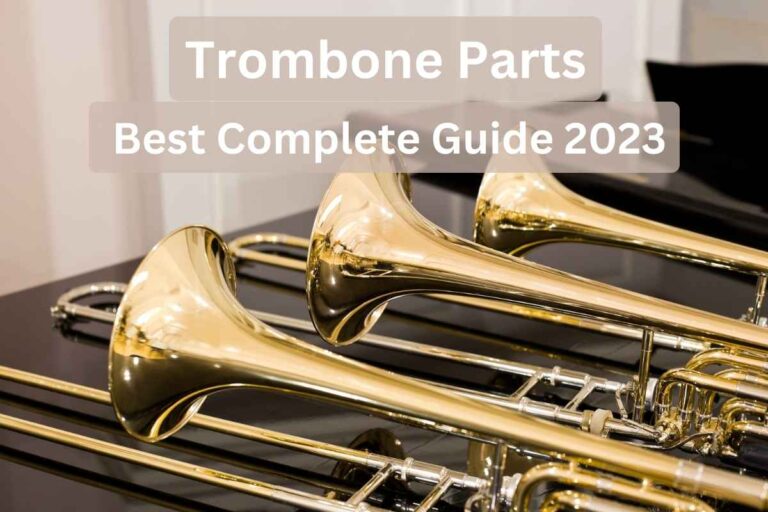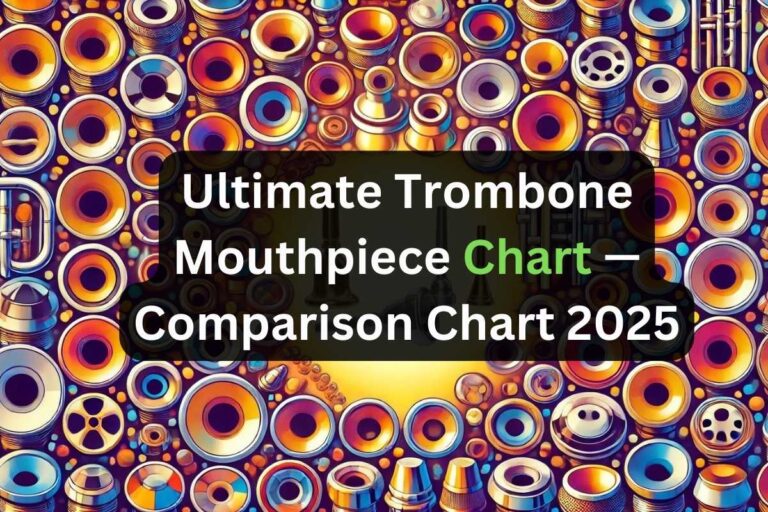Ultimate Guide to 15 Types of Flutes: Best Pictures and Video
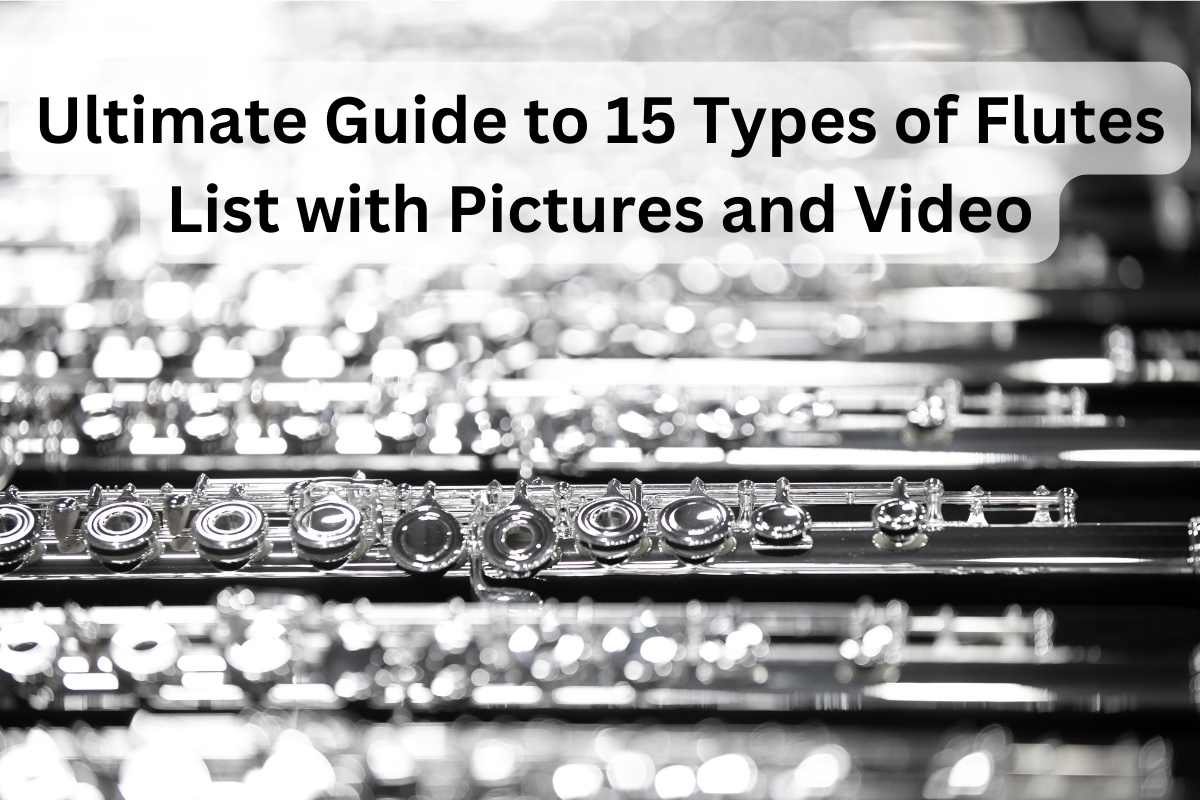
Welcome to our ultimate guide to 15 types of flutes! Flutes are ancient instruments with diverse shapes and sizes. In this article, we provide an in-depth rundown of each flute type along with pictures or videos (where available) — you can make informed choices if purchasing or simply curious.
Whether looking for new instruments or simply curious, here you are in the right place. So let’s get going — start exploring modern flute history before delving deeper into modern types available… what else awaits? Let’s go explore!
Different Types of Flutes – Woodwind Instruments
There are multiple varieties of flutes worldwide, each boasting its own individual shape, size and construction materials. From double contrabass to piccolo flutes – with varied historical backgrounds & sounds produced — to produce beautiful melodious tones when air is passed through them all, flutes produce beautiful tones when air passes through them!
Flutes come in all forms and materials. Their key mechanisms set some flutes apart. Most popular among them is the modern concert flute used both orchestrally and popular music — while there are also wooden or bamboo flutes, vessel flutes, plastic flutes and electrical flutes on offer.
The flute is an adaptable musical instrument with a long history and global significance, having been created over centuries from materials ranging from wood and bone to plastics and baked clay. There are numerous types of flutes — Piccolo Flute, Alto Flute and Bass Flute that each have distinctive properties; yet share common note fingering patterns. The flute is used widely across musical genres and ranks among one of the oldest wind instruments around today.
1 Flute Family
The Western concert flute family comprises various sizes and ranges of types of flutes that offer flutists an abundance of options for their playing experience. The primary types are bass flute, alto flute, C flute (Western concert flute) and piccolo; of these the C flute is by far the most widely played model; other less frequently found flute types include Eb soprano flutes as well as contrabass and subcontrabass models.
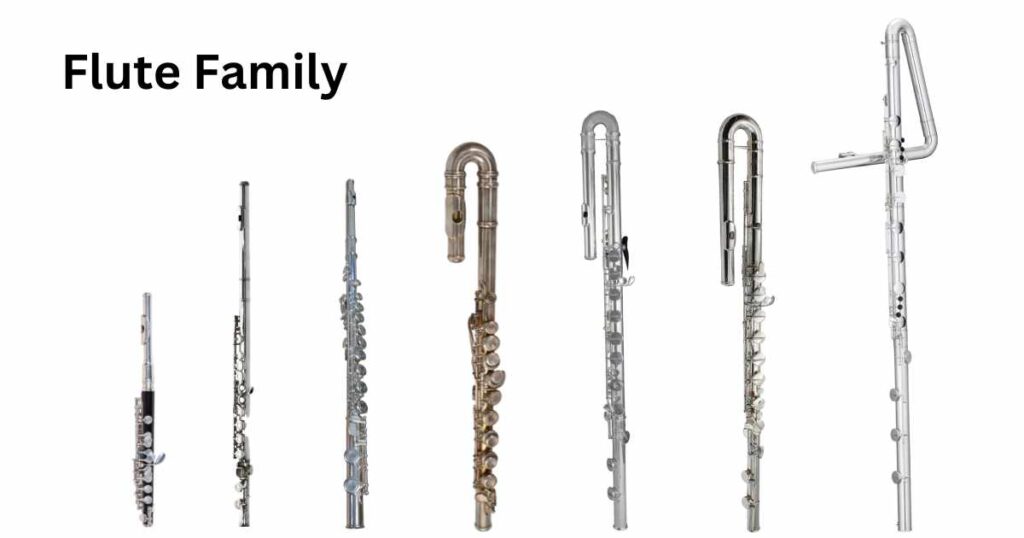
Performers often switch between members of the flute family.
The piccolo, an octave higher than its sister instrument — the concert flute (C flute), produces an explosive high-pitched sound with 30 cm long tube that resonates loudly. In comparison, a alto flute produces gentler tones; bass flute features pitched an octave below for even further expression resounding loudly into right ear of performer’s.
Are you curious to gain more information on various flute parts? Follow along our post detailing a Complete Flute Anatomy Guide!
2 Alto Flute
The alto flute is known for producing its signature soothing lower pitch tone sound with its long and thick body — creating that distinct alto sound and amplifying lower tones.
Theobald Boehm designed the alto flute in 1854, and its unique mechanism and sound have since then attracted composers like Stravinsky, Ravel, and Holst — all used its tones in their compositions. Pretty cool stuff?
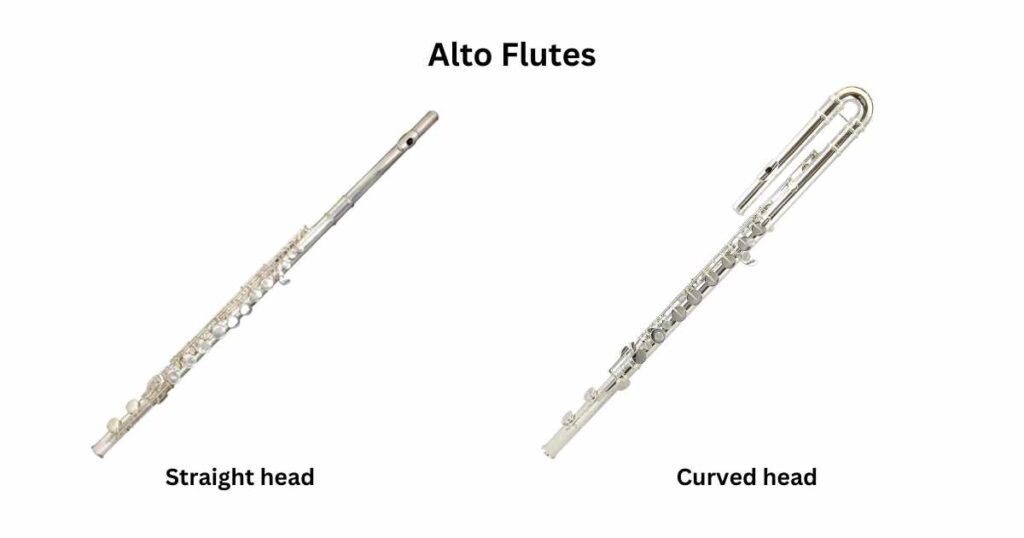
There are two varieties of alto flutes on the market — those featuring straight headpieces and those designed with curved joint heads — ideal for taller individuals with longer arms and fingers; curved-head ones are best for people of smaller stature.
Alto Flute and Piano Duet
Alto flutes are typically tuned to G. Boasting a wider dynamic range (from G3 to G6) and stronger tone qualities; altos produce stunning expressive and beautiful sounds with just as many expressive possibilities compared to C flutes – although they require additional breath as their sound transposes one fourth lower!
3 Standard Concert Flute – C Flute
The concert flute (commonly referred to as traverse flute) is hailed for being great for beginners and is particularly suitable for flutists just starting their musical careers. But its many keys may prove challenging for novice players — some may find controlling sound through embouchure difficult at first.
A regular transverse concert flute is typically played from its side and closed at either end — played using air overblowing techniques or overblowing. Adjust the pitch by opening/closing 16 (usually) tone holes to change pitch accordingly. Overblowing techniques also exist for altering both the pitch and tone of their sound production.
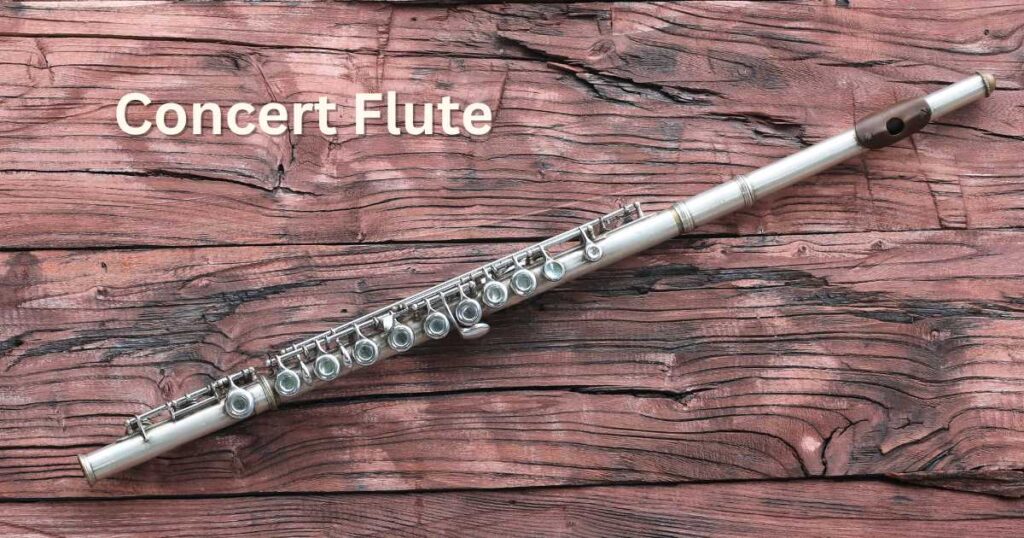
C metal flute measures around 67 cm long with an internal bore diameter of 1.9 cm — boasting a three to four octaves range starting from middle C, reaching up to C7 or D7 typically; skilled players may reach F#7!
Modern concert flute is actually inspired by designs dating back to the 19th century. Made out of silver with intricate key mechanisms — their current form was established by Theobald Boehm a German flute maker from this era.
Beautiful Concert Flute Cover
Modern flute players in Western orchestras often utilize this instrument, though you might also come across one in marching bands, concert bands or jazz ensembles. While their beautiful solo sounds make them highly sought-after by high-status individuals, oboe and bassoon timbre may sometimes clash
Are You ready to learn to Play Flute? Read our post about Flute Fingering For Beginners with Downloadable PDF Chart and start learning right now!
5 Piccolo Flute
The piccolo, one of the tiniest and highest-pitched flutes from the Western types of flutes — is often heard playing military marches and classic orchestral music. When played, its sparking tones create striking high and sharp sounds; but its surprising versatility means it can create soft tones as well for added brilliance to marches.
A piccolo flute is an instrument comprised of two parts. Common materials for its creation are plastic, resin, brass, nickel silver or hardwood — with orchestral performances preferring wooden piccolos over all others.
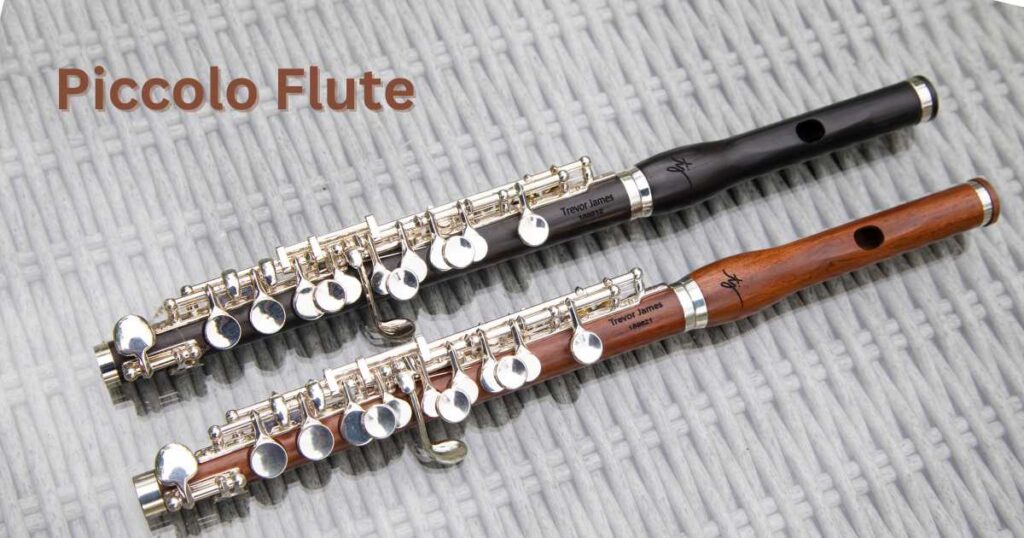
The piccolo flute is a truly remarkable instrument; its name in Italian — “ottavino”! As a transposing instrument, meaning its notations correspond with notes played an octave higher. Additionally, this instrument weighs half, half size and plays at an octave higher pitch than the standard C flute; pretty impressive indeed!
The piccolo first gained recognition during the 18th Century (and, according to some, even the Baroque period) — much like its precursor the flute. Composers such as Mahler and Strauss employed piccolos into orchestral arrangements they wrote — using piccolos to expand flute range while adding brilliance to their music. One such work is Berlioz’s 1840 Grand Symphonie Funebre et Trimphale composition as an excellent example.
Harry Potter Piccolo Flute Cover
Playing the piccolo can be more of a challenge due to its small embouchure hole and rapid airflow. Sound production relies heavily on head joint action — other parts of its body allow control through fingering techniques.
6 Eb Soprano Flute – E Flat Flute
Eb soprano flute (sometimes known as the Tierce ) stands out within the flute family due to its distinct materials, playing technique and sound characteristics that distinguishe it. These similarities with concert types of flutes make up one distinct instrument within this family of instruments.
Eb soprano (tierce) flute stands out for being pitched a minor third higher than the C flute — making it suitable for jazz players due to the similar pitch keys with baritone and alto saxophones. Even with such differences — both instruments produce similar sounds using similar techniques for sound production.

Initially used by marching bands as an E-flat clarinet replacement, the Soprano Flute has an unusual tuning that places it between the concert flute and the alto flute in terms of tuning. Boasting both a sweeter tone than the concert flute and a lower sound compared to the piccolo — its popularity today may not be widespread; nonetheless some American publications for flute choir still include parts for this instrument in their programs.
7 Bass Flute
The bass flute, another member of the modern concert flute family, features a lower pitch than regular flutes but still functions in much the same manner as their C flute counterpart. Less popular or commonly played than concert flute — bass flute produces rich sounds and an octave lower pitch. Play it alongside other instruments without needing to transpose music first!
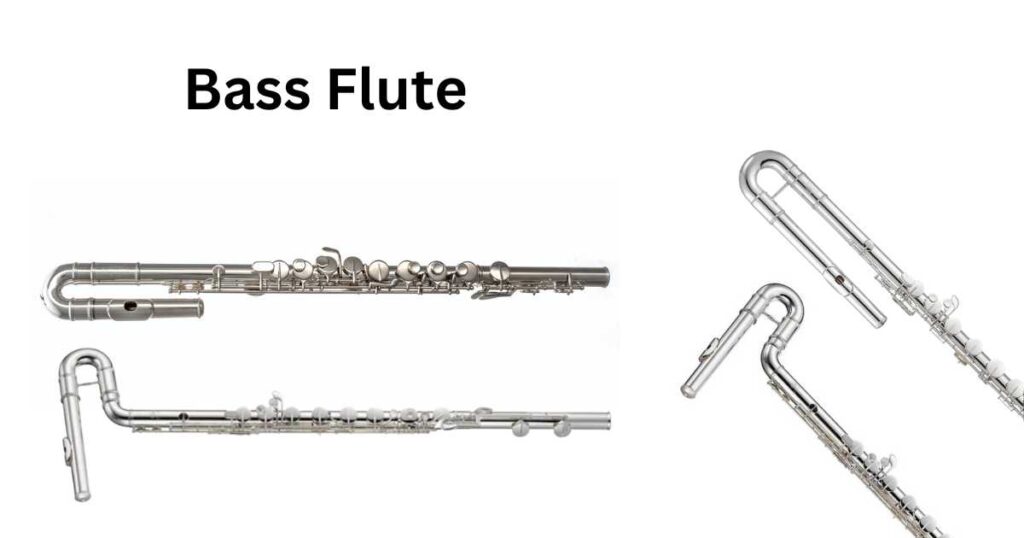
Playing bass flutes can be quite a difficult feat due to their size and weight; however, various techniques (including U-bend head joints or double bend head joints) make playing easier.
Some bass flutes even look similar to saxophones but produce their sound by blowing air across an embouchure hole instead — you might also come across one with a diagonal flute tube brace for extra support.
It requires more air than other flutes and may weigh more than other models, thus increasing moisture formation which may present challenges to some players. The pitch of the bass flute is C — an octave below the concert flute in pitch range.
Bass Flute with Piano Accompaniment
Ravel, Stravinsky and Shostakovich have written works written explicitly for bass flutes; bass flutes have since then been utilized both in avant-garde music as well as jazz. Due to its large and weighty dimensions, fewer written works were specifically composed for them.
A bass flute measures 146cm long, making it relatively large in terms of physical size. To support its weight and ensure long term playback of this instrument, bracing has been added.
8 Contrabass Flute
Contrabass flute has a similar range to concert types of flutes, yet goes two octaves lower in pitch, sounding similar to cello and slightly wider than regular bass flute. There’s even an alternate version called the “contrabass flute in G” — it sits one fourth lower than the standard bass flute and one octave lower than the alto flute.
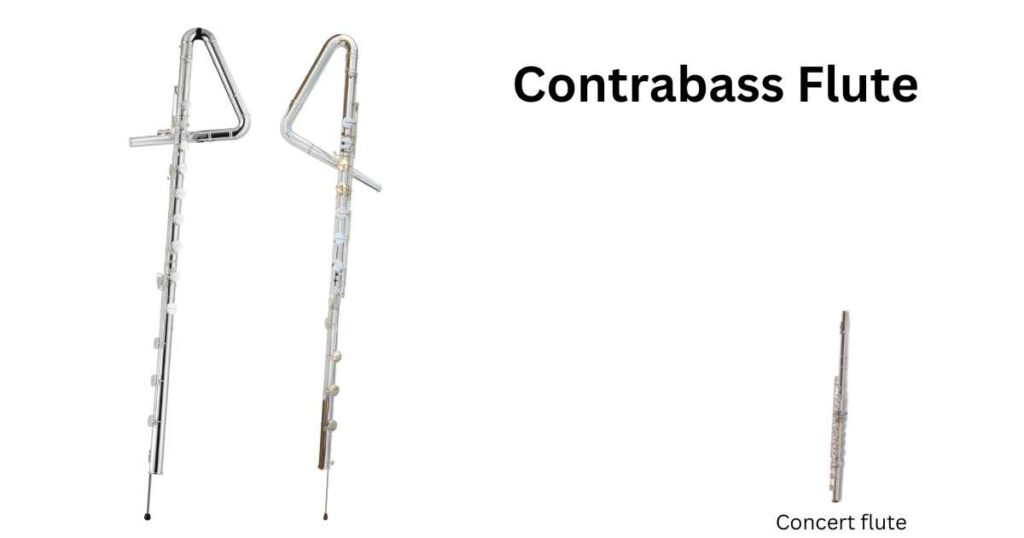
Contrabass flute is an unusual instrument found both solo and chamber music settings, boasting haunting low register sounds that add deep bass notes to flute choirs. Playing this contrabass flute (with 9 feet of tubing!) requires taking slow breaths through wide nostrils in order to play effectively.
Fallen Down Flutes and Strings Cover
9 Double Contrabass Flute
The double contrabass flute, commonly referred to as an octobass flute, is like the giant of flutes!
The double contrabass flute reigns as the undisputed master of low notes! No other instrument can match its depth — at around 30 pounds in weight, its heavy status cannot be overlooked!
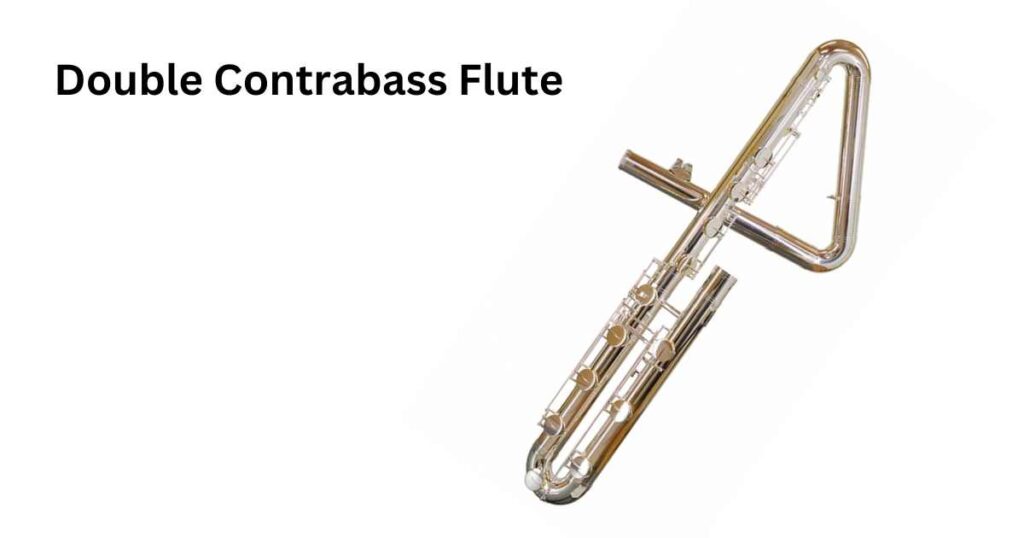
At over 8 ft tall and 22ft of tubing length, it boasts the lowest pitch possible — not surprising considering its size! Weighing up to 13kg!
The Double Contrabass flute can be thought of as being like the concert flute’s lower-pitched twin brother — sounding three octaves lower. As one of the bass Flutes it provides one of the lowest pitches available.
A double contrabass flute doesn’t come equipped with an adjustable stand; as such, to play it you may require standing on a stool instead. But this flute might just be one of the easiest bass flutes out there!
10 Wooden Flutes – Baroque Flute
Wooden flutes (also made of synthetic wood), sometimes referred to as Irish flutes, offer unique tonality and responsiveness that set them apart from their metal counterparts.
Breath support becomes particularly essential when playing this kind of instrument — the wooden flute requires greater breath support to avoid overflowing.
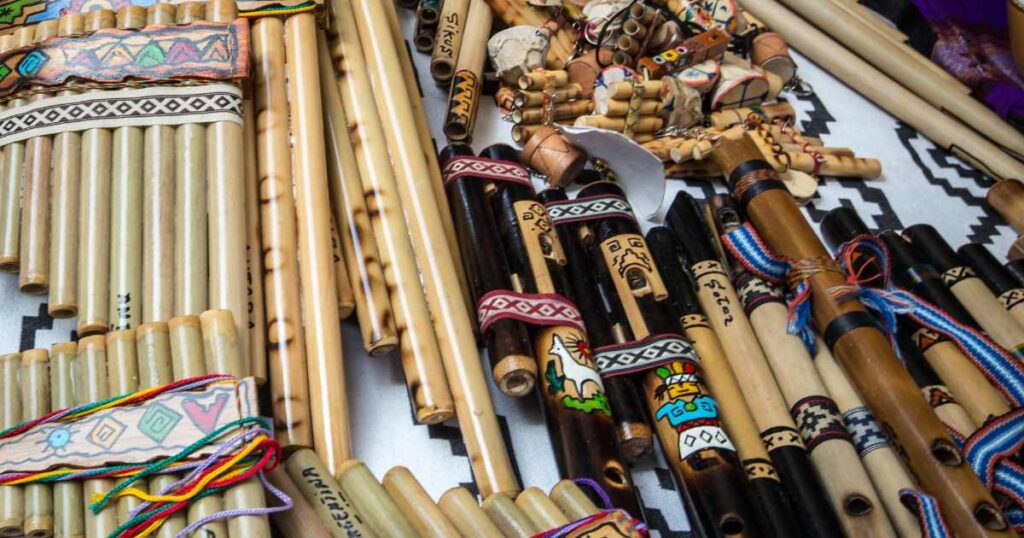
Irish wood flute and classical flute have different systems and pitches — classical flute is in the C key while Irish is in the D key for different fingering options and easier F sharps in Irish music. You can cover half the hole on an Irish flute to produce natural notes — pretty cool stuff.
Beginners often find synthetic wood flutes easier due to low maintenance needs. Experienced players (looking for long-term investment) may prefer real wooden flutes which require greater effort — bringing incredible rewards as an instrument enthusiast.
Allemande from the Partita on the Baroque Flute
Native American flutes (another popular wooden flutes) stand out as being especially distinct flutes due to their distinct design and construction features — 5-hole systems (sometimes 4 or 6) with open back design (unlike Irish flutes) without foot joints for foot joint playability. When played skillfully — they still produce beautiful sounds!
Rosewood produces a warm sound while Cocuswood can create brighter tones; African Blackwood stands out as loudest and humidity resistant compared to Ebony — choose the wood that matches your desired sound and playing style best!
11 Native American Flutes
The Native American Flute was inspired by woodpecker holes found in tree branches — creating an incredible sound when wind passes through it.
Native American types of flutes are beautiful wooden instruments crafted of cane, hardwood or softwood that feature easy playing with clear yet unpredictable tones for a truly distinctive quality.
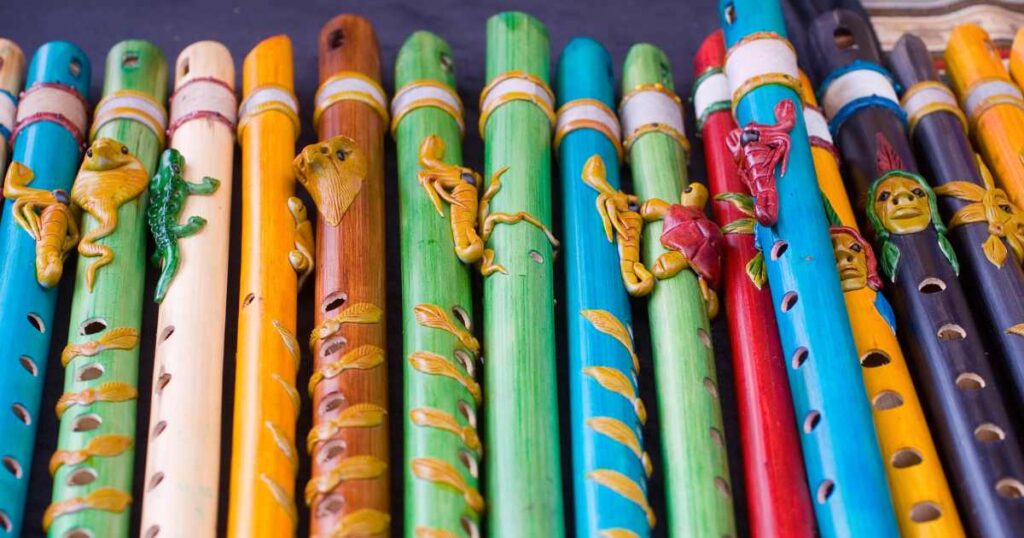
Contrary to Western concert flutes, Native American flutes are one-piece instruments without separate head, foot and body parts. Some Native American flutes may include an adjustable removable block in their headspace for changing sound effects when moved around.
These flutes contain five or six finger holes for finger placement and mouthpieces with two chambers to generate sound production with various keys and temperaments available.
ASMR Session on Native American Flute
Flute players hold it similar to playing a recorder, with open finger holes and two chambers; one chamber contains your breath while the other makes sounds; you can breathe easily into either end without needing perfect embouchure.
Native American flutes come in different types of flutes: Cheyenne, Chippewa and Dakota varieties.
12 Irish Flute
Irish flute is an instrument associated with Celtic music culture. Made of wood with end-blown flute keys and first appearing 18th century — its use originated primarily within Irish folk music.
The Irish flute has long been used in traditional Irish and Scottish music, but has recently seen more widespread usage across jazz genres and beyond. You can hear its use on recordings by some of Ireland’s top folk musicians: Seamus Ennis, Johnny Moynihan and Tommy Makem.
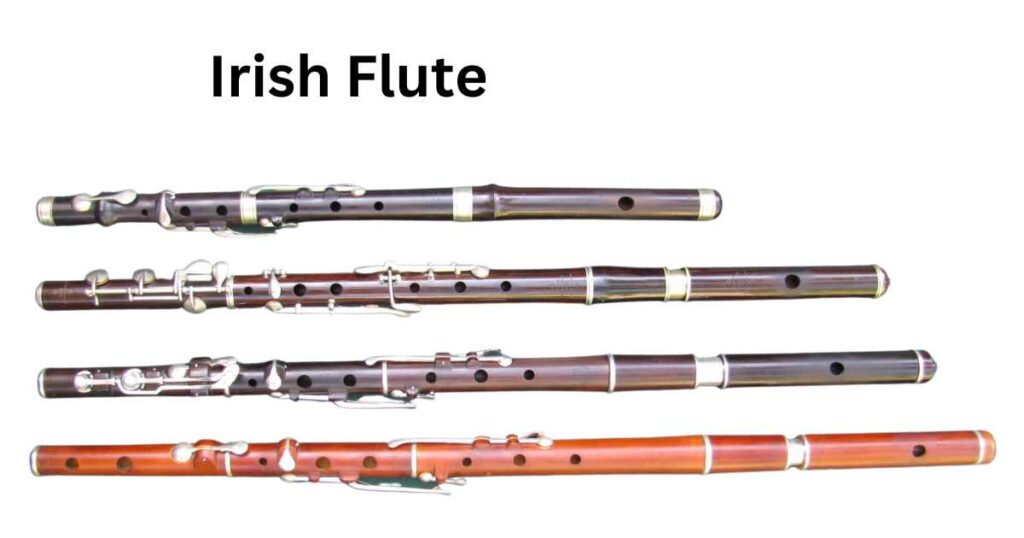
Irish flutes are wooden instruments with conical bore bodies and cylindrical bore heads, pitching D and capable of easily playing diatonic scales in D and G keys — these notes were often featured prominently in Irish melodies. Older models lacked keys or were made out of alternative materials like PVC or bamboo.
Mandolin and Irish Flute Song
A flute player produces sound by blowing across one end and covering any combination of holes with their fingertips to alter its pitch and alter what notes it produces.
13 Bansuri Flute – The Bamboo Flute
The bansuri is an iconic bamboo flute from South Asia originating in India, Sri Lanka, Pakistan and their nearby countries.
Hindu texts refer to it as Nadi and tunava — the bansuri flute is known as being played by Lord Krishna himself and can often be found throughout Bangladesh, Nepal and India. Another similar flute used is known as the Venu flute.
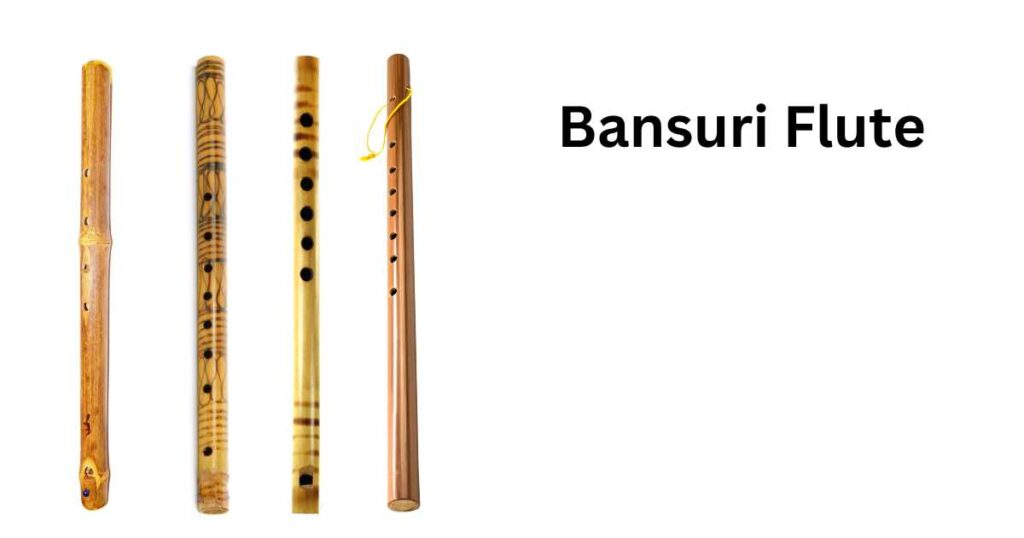
Bansuri has long been associated with herders and pastoral traditions. It was first used for light compositions and film scores and later found its place among Indian classical and folk music repertoire.
Today, new age meditation music often incorporates these types of phrases; typically transverse versions (over fipple) tend to be preferred among Indian classical composers.
Bansuri flutes are one-piece instruments constructed with bamboo shafts ranging in length from 30cm to 75cm — their sizes depend upon both inner diameter and length, providing different pitches as a result. This instrument, similar to other bamboo flutes, boasts a blow hole and six (or seven) finger holes along its body for playing. Similar to its counterparts, there is no key mechanism on a bansuri.
Krishna Theme Bansuri Flute Cover
Japanese bamboo flutes include Shinobue, Shakuhachi, Komabue Ryuteki Nohkan and other varieties.
Bamboo materials make a bamboo deck easy to make and maintain in all climate conditions — yet lack variety when it comes to design options, potentially decreasing player comfort.
14 Pan Flute – Pan Pipe
Pan pipes (also called pan flute or syrinx ) are flutes named for Pan, the Greek God of Nature and Shepherds.
Musical pipes of different lengths and materials such as bamboo (or giant cane) are used to produce different notes — occasionally other materials like plastic, ivory, wood and metal may also be employed for producing sound.
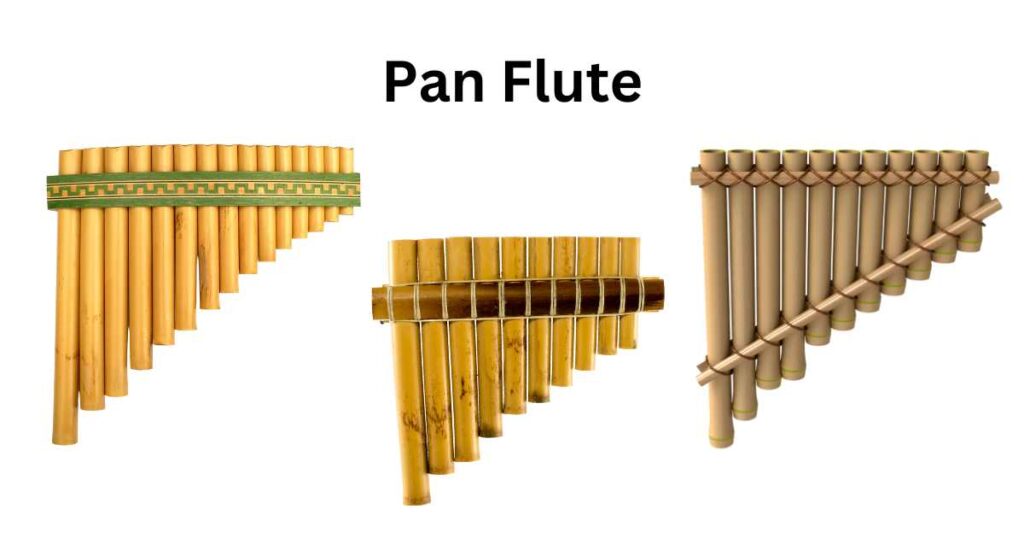
Pan flutes resemble pipes with one end closed off to produce lower notes than an open pipe of similar length. Pebbles or corn kernels may be used in South American-style panpipes for fine-tuning; Romanian-style panpipes typically use wax, cork or rubber as their tuning medium for quick adjustments.
Pan flute is played by blowing across its open ends to produce different notes that correspond with different frequencies — increase breath pressure or lip tension for additional harmonics. Romanian pan flutes feature unique, curved arrays of pipes making hitting those notes easy!
Pan flute and guitar
Players can adjust the pitch by tilting and moving their pipes; experienced musicians may use either hand or breath vibrato for jamming purposes in any scale or key.
15 Shinobue – Japanese Flute
The Shinobue flute is a side-blown transverse flute similar to that used on bansuri. Generally used at informal events — it has high pitched sound that travels well through large crowds.
The Shinobue flute can often be found featured in Nagauta and Hayashi ensembles, playing an integral role in Kabuki and Noh theater music, Shinto music such as Kagura-den as well as traditional folk songs in Japan.
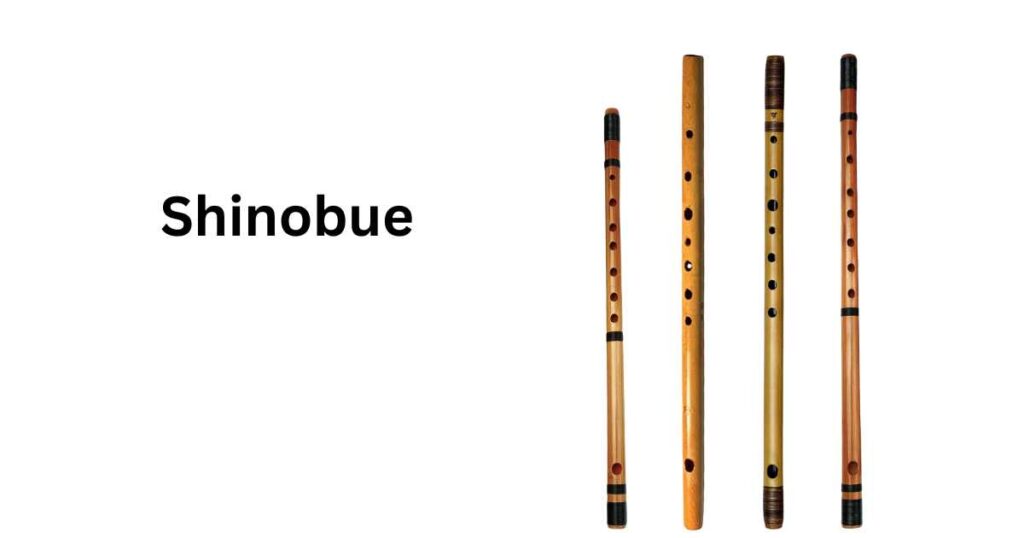
There are two styles of this instrument — Hayashi and Uta; the Uta flute being more in line with Western styles than the Hayashi flute.
Made entirely out of bamboo, the flute features three parts: head joint, middle part and foot joint. Furthermore, its detachable mouthpiece makes use easier.
Sakura Sakura Koto and Shinobue Performance
Flutes have beautifully designed holes that make playing easy — though newcomers might become frustrated if they need to expel large volumes of air when blowing notes.
Conclusion
Flutes are highly flexible instruments available in multiple sizes and styles ranging from piccolo to bass (and even wooden and bamboo) flutes — providing musicians with plenty of options when selecting instruments for performances or compositions.
Each type has unique qualities; from classical to modern vibes — there will surely be one to meet your musical tastes! Our guide to 15 types of flutes gives an overview of this diverse instrument range.

